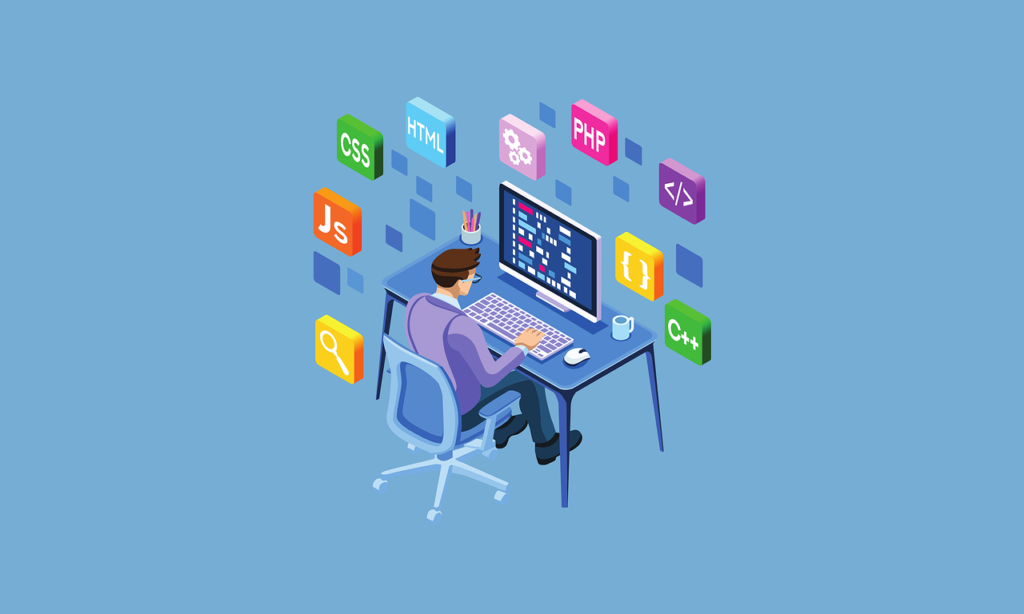Why Flexibility is the Key to Success in Today’s Business World

In today’s fast-paced business world, flexibility has emerged as one of the most important traits for organizations seeking long-term success. With rapidly changing markets, evolving customer expectations, and constant technological advancements, the ability to adapt has become essential. This post will explore why flexibility is key to thriving in modern business, covering different aspects of flexibility and how it contributes to overall success. The Role of Flexibility in Business Success Adapting to Market Changes Markets are continuously shifting due to economic trends, technological innovations, and consumer behavior. Businesses that are flexible can quickly adapt to these changes by modifying their strategies, offerings, and processes to stay competitive. Flexibility allows companies to pivot when necessary, ensuring that they can respond effectively to opportunities and challenges. Managing Uncertainty and Risk The business world is inherently uncertain. Flexibility provides businesses with the tools to navigate this uncertainty by allowing them to adjust their operations and plans based on real-time information. By being adaptable, businesses can manage risk more effectively, avoiding potential pitfalls and capitalizing on unforeseen opportunities. Responding to Customer Needs Customer expectations are constantly evolving. Flexible businesses can respond quickly to changes in customer demands by offering new products, services, or solutions. By staying attuned to customer needs and being willing to make adjustments, companies can build stronger relationships and foster loyalty. Types of Flexibility Businesses Need Today Operational Flexibility Operational flexibility refers to the ability to adjust internal processes, resources, and workflows to meet changing demands. This can involve scaling production up or down, shifting priorities, or implementing new technologies to improve efficiency. Companies with operational flexibility can adapt their systems to meet business goals more efficiently. Workforce Flexibility Workforce flexibility involves adapting how employees work, whether it’s through remote working options, flexible schedules, or reskilling teams to meet new demands. Flexible businesses empower their employees to be agile, allowing for a dynamic workforce that can respond to business needs quickly and effectively. Strategic Flexibility Strategic flexibility is the ability to modify business strategies in response to market trends or disruptions. This includes being open to new business models, entering new markets, or changing product lines to align with customer preferences or competitive pressures. Strategic flexibility enables businesses to remain relevant in a constantly changing landscape. Benefits of Flexibility in Business Innovation and Creativity Flexibility fosters an environment where innovation and creativity can thrive. Businesses that are open to change and experimentation are more likely to innovate, which can lead to new products, services, or solutions that set them apart from competitors. This mindset helps drive growth and long-term success. Enhanced Customer Satisfaction When businesses are flexible, they are better able to meet customer needs and expectations. This leads to improved customer satisfaction as companies can quickly adjust to provide more relevant products or better service. Satisfied customers are more likely to become repeat buyers, contributing to higher retention rates. Competitive Advantage Flexibility offers a significant competitive advantage, as businesses that can adapt faster than their competitors will stay ahead in the market. Whether it’s responding to a new trend or adjusting to economic shifts, companies with high flexibility can maintain their market position and outmaneuver slower-moving rivals. Flexibility in Leadership and Management Flexible Decision-Making Approaches Leaders who embrace flexibility are more open to considering diverse perspectives and making quick decisions when necessary. This flexible approach to decision-making helps businesses remain agile, allowing them to respond to changes without lengthy delays. Agile Leadership Styles Agile leaders encourage adaptability across the organization by fostering an open-minded, proactive culture. They create an environment where employees feel empowered to make decisions, take risks, and innovate, helping the business stay resilient in the face of change. Encouraging a Flexible Company Culture A flexible company culture promotes a mindset of continuous improvement and openness to change. This type of culture encourages employees to think creatively, take initiative, and embrace new opportunities. Flexibility at all levels, from leadership to individual contributors, is essential for achieving long-term success. Technological Advancements Enabling Flexibility Cloud Computing and Remote Work Cloud computing has revolutionized how businesses operate, offering greater flexibility in terms of how and where employees work. Remote work capabilities allow teams to collaborate from anywhere, improving productivity and ensuring that business operations can continue seamlessly, even in challenging circumstances. Automation and Artificial Intelligence Automation and AI are powerful tools that provide businesses with operational flexibility by automating repetitive tasks and optimizing workflows. These technologies allow businesses to be more responsive to market changes and customer demands while reducing costs and improving efficiency. Collaboration Tools and Platforms Digital collaboration tools enable businesses to work more flexibly by facilitating communication and project management across teams, regardless of location. Tools like Slack, Trello, and Zoom have made it easier for businesses to operate in a more dynamic, decentralized manner, improving both internal coordination and customer interactions. How Flexibility Helps in Crisis Management Business Continuity in Uncertain Times During crises, businesses that are flexible are better positioned to maintain operations. Whether it’s shifting to remote work or quickly pivoting product offerings, flexibility helps companies continue serving customers and generating revenue, even during challenging times. Adapting to Economic and Global Disruptions Economic downturns, pandemics, and other global disruptions have proven that flexibility is crucial for survival. Businesses that can quickly adapt to new market conditions or restrictions are more likely to survive and even thrive during crises, while rigid businesses struggle to adjust. Lessons Learned from Recent Crises Recent global crises, such as the COVID-19 pandemic, have taught businesses that flexibility is a key driver of resilience. Those that were able to pivot rapidly—whether by changing their business models, moving operations online, or offering new products—were better equipped to weather the storm and recover more quickly. Challenges of Implementing Flexibility in Business Balancing Flexibility and Structure While flexibility is essential, businesses must find the right balance between adaptability and maintaining a structured approach to operations. Too much flexibility can lead to chaos, while too much structure can stifle innovation. Finding the right balance
The Role of Technology in Enhancing Customer Loyalty and Retention

Customer loyalty and retention are critical for long-term business success. In today’s competitive landscape, retaining customers is more cost-effective than acquiring new ones. Technology plays a key role in enhancing customer loyalty by providing personalized experiences, improving communication, and enabling businesses to respond to customer needs in real-time. In this post, we’ll explore how technology can be leveraged to boost customer loyalty and retention. The Impact of Technology on Customer Retention Personalized Customer Experiences Technology allows businesses to offer personalized experiences that cater to the individual needs and preferences of their customers. By using customer data, companies can tailor communications, recommend products, and even customize pricing strategies. This personalized approach makes customers feel valued, which strengthens their loyalty to the brand. Automation and Streamlined Customer Support Automation tools such as chatbots and automated email responses provide quick solutions to common customer issues, making support more efficient. By reducing wait times and providing round-the-clock service, businesses can ensure a seamless experience that keeps customers satisfied and engaged. Data-Driven Decision Making With the rise of data analytics, businesses can make informed decisions that directly impact customer satisfaction. Technology enables companies to analyze customer behavior, track satisfaction trends, and predict potential issues, allowing them to proactively address concerns before they lead to churn. Key Technologies Driving Customer Loyalty Customer Relationship Management (CRM) Software CRM systems centralize customer data, enabling businesses to track interactions, monitor preferences, and offer personalized service. A well-implemented CRM can greatly improve customer satisfaction by ensuring that every touchpoint is optimized for the individual. Artificial Intelligence and Chatbots AI-powered chatbots provide instant support to customers, helping with common inquiries and even assisting with purchases. These tools reduce friction in the customer journey, offering 24/7 service and improving the overall experience, which boosts loyalty. Mobile Apps and Push Notifications Mobile apps allow businesses to stay connected with customers in a more personal way. Push notifications remind customers of special offers, updates, or abandoned carts, encouraging them to return and make purchases. This kind of ongoing engagement fosters a stronger bond between the customer and the brand. SaaS Solutions for Improving Customer Loyalty Subscription Management Platforms For SaaS businesses, subscription management platforms are essential for maintaining customer relationships. These platforms allow businesses to automate billing, manage subscriptions, and offer flexible pricing plans, which can help reduce churn and improve customer satisfaction. Loyalty Programs and Rewards Systems Technology makes it easier to set up loyalty programs that reward customers for their continued patronage. By integrating rewards systems into the SaaS platform, businesses can encourage repeat purchases and long-term loyalty, which drives retention. Analytics Tools for Customer Insights Analytics tools give businesses insight into how customers are using their products, identifying patterns that indicate satisfaction or dissatisfaction. This data allows businesses to adjust their strategies in real-time to better meet customer needs, improving loyalty in the process. Real-Time Feedback and Continuous Improvement Gathering Customer Feedback with Technology With the help of technology, businesses can collect real-time feedback through surveys, reviews, and other feedback mechanisms. This allows them to stay in tune with customer expectations and make adjustments that keep customers happy and engaged. Analyzing Feedback to Refine Services Once feedback is gathered, companies can analyze the data to identify areas for improvement. Whether it’s a small feature enhancement or a major overhaul, technology allows businesses to quickly implement changes that enhance the customer experience, leading to stronger retention rates. The Role of Personalization in Building Loyalty Tailored Communication and Offers Personalized communication is a powerful way to build loyalty. Whether through targeted emails, personalized product recommendations, or special discounts, customers are more likely to stay loyal when they feel the business understands and values their preferences. Creating a Unique Customer Journey Technology allows businesses to map out unique customer journeys based on individual behaviors and preferences. By creating tailored experiences, businesses can differentiate themselves from competitors, making it more likely for customers to stick around. Leveraging Data for Proactive Customer Retention Predictive Analytics for Churn Reduction Predictive analytics tools help businesses forecast which customers are at risk of leaving. By identifying these signals early, businesses can take proactive measures—like offering discounts or personalized outreach—to retain those customers. Using Data to Understand Customer Behavior By tracking how customers interact with products and services, businesses can better understand their needs and pain points. This data can be used to optimize products, services, and communication strategies to better align with customer expectations, resulting in stronger loyalty. Challenges in Implementing Technology for Customer Retention Overcoming Data Privacy Concerns With the increase in data usage, businesses need to be mindful of privacy concerns. Implementing strong data protection practices is essential for maintaining customer trust and avoiding potential legal issues that could harm customer relationships. Ensuring a Human Touch in Automated Solutions While automation can improve efficiency, it’s important not to lose the human touch in customer interactions. Combining technology with personalized, human support ensures that customers feel valued, rather than like they are just dealing with machines. Future Trends in Customer Loyalty Technology AI-Driven Personalization As artificial intelligence continues to evolve, its ability to personalize customer experiences will become even more sophisticated. From recommending products to optimizing communication, AI-driven personalization will be a major trend in customer retention strategies. Blockchain in Customer Loyalty Programs Blockchain technology is beginning to influence customer loyalty programs by providing a secure and transparent way to manage rewards. This can build greater trust with customers, ensuring that loyalty programs are fair and reliable. Conclusion Technology is transforming the way businesses approach customer loyalty and retention. By leveraging tools like CRM software, AI, and data analytics, companies can build stronger relationships with their customers and retain them for the long term. For SaaS businesses, staying ahead of technological trends is essential to maintaining a competitive edge and fostering lasting customer loyalty.
